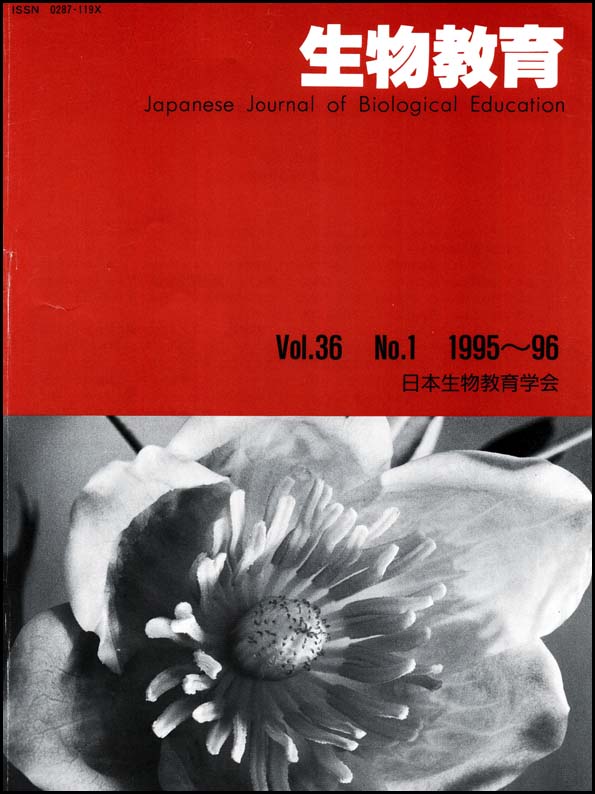
- Issue 3-4 Pages 154-
- Issue 2 Pages 98-
- Issue 1 Pages 2-
- |<
- <
- 1
- >
- >|
-
Y. Kato, T. Seto1996Volume 36Issue 1 Pages 2-11
Published: 1996
Released on J-STAGE: December 23, 2022
JOURNAL FREE ACCESSThe purpose of the present study is to make clear (1) how much children understand the diversity of animals, (2) how much children recognize the dignity of human and animal lives, and (3) how children perceive the prevention of cruelty to animals. The examination tool was a questionnaire which gathered data on the children’s attitudes toward animals. The total number of respondents was 2056, most of which were elementary and high school students with ages ranging from 8 to 18 years old.
Based on age and sex, children’s perceptions of animal lives were compared. In general, male students could tolerate the existence of various species of animals in contrast to females who tended to dislike certain unpopular animals, mostly because of subjective reasons such as “they are dirty”, “they stinking” or “they look unpleasant”. The negative attitudes of female students toward the existence of some kinds of animals extended until junior high school age. Children’s ecological appreciation of animals was much influenced by sight and smell. However, the development of a biological viewpoint and scientific perception of living organisms was thought to change their thinking concerning the ecological significance of unpopular animals. The results indicated that cultivation of normal consciousness of the existence of all kinds of living organisms, as well as of animal life, is accomplished by rational and global interpretation in biology education.
View full abstractDownload PDF (28398K)
-
C. Maruyama, Y. Takagi1996Volume 36Issue 1 Pages 12-14
Published: 1996
Released on J-STAGE: December 23, 2022
JOURNAL FREE ACCESSDownload PDF (10270K) -
Y. Terada1996Volume 36Issue 1 Pages 15-19
Published: 1996
Released on J-STAGE: December 23, 2022
JOURNAL FREE ACCESSGoldfish scale transplantation had been introduced in some biology classes for teaching the immune reaction. In the present study the method of the exercise was improved to observe the rejection reaction more clearly and the improved exercise was examined in the author’s biology classes. In the exercise, one or more scales were transplanted from one fish to another. About a week after the transplantation, students could observe that the rejection reaction had occurred in about 30% of the fish with transplanted scales.
After transplantation of scales of the same MHC type, the fish’s own scales or brother’s scales, for example, the rejection reaction cannot be observed. As this phenomenon will be useful to help students understand the recognition of what is self or foreign, the author proposes to use this immune reaction in an advanced exercise. The experiment described in the present paper appears to be useful for upper secondary school students to understand some important current issues related to immunity, such as organ transplantation and AIDS.
View full abstractDownload PDF (13338K)
- |<
- <
- 1
- >
- >|